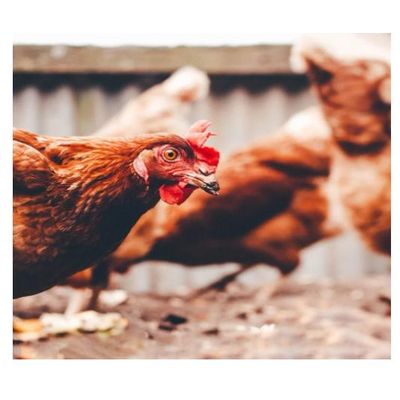

- Home
- Companies
- Franco S.r.l.
- Articles
- Complete guide to raising laying hens: ...

Complete guide to raising laying hens: organic or free range?
1. Introduction
Laying hens are a key component of agriculture and animal husbandry around the world. These surprisingly versatile animals not only provide a protein-rich food source through their eggs, but also contribute to agricultural economics and sustainability through manure production and food waste reduction.
In the modern context, raising laying hens has become a topic of great interest, with an increasing focus on organic egg production and free-range farming. These farming methods are often seen as more humane and sustainable than intensive battery farming, but they also present their own unique challenges.
In this article, we will explore the distinguishing characteristics of laying hens, with a particular focus on the differences between organic and free-range rearing. We will discuss the various breeds of laying hens, rearing methods, and the benefits and challenges associated with each rearing method.
2. Poultry farming: organic or free-range
Organic Poultry
Organic hens must be raised in an environment that strictly adheres to regulations. This means they have access to open space for much of the day, where they can roam freely. Their diet consists mainly of food that does not contain pesticides or GMOs. In addition, organic hens are not treated with antibiotics or hormones unless absolutely necessary for their health and well-being.
Free-range Poultry
Free-range hens, as the name suggests, have access to open spaces. However, unlike organic hens, the standards for their food and medical care may be less stringent. For example, they may be fed grain mixtures and may be treated with antibiotics as a preventive measure. Despite this, free-range farming is generally considered to have more animal welfare and to be sustainable than intensive farming.
Breeding Considerations
Regardless of the rearing method, there are some key considerations to keep in mind when raising laying hens. These include ensuring that the hens have a proper coop(with optimal climate), access to clean food and water, and medical care when needed. In addition, it is important to regularly monitor the hens’ health and take preventive measures to prevent diseases and pests.
Organic eggs and eggs from free-range hens offer a number of significant benefits while facing some specific challenges related to their rearing method.
Benefits:
- Animal Welfare Standards: Both production methods are distinguished by high animal welfare standards. Organic hens benefit from accessible outdoor space and pesticide- and GMO-free organic feed, while free-range hens have a less strict diet than organic farms. Don’t forget the well-being provided by an optimal climate inside the hen houses.
- Nutritional Quality: Organic and free-range eggs tend to have higher nutritional quality than eggs produced on intensive farms. This is due to the hens’ more natural diet and reduced exposure to harmful substances such as antibiotics and hormones.
- Environmental sustainability: Both production methods can contribute to environmental sustainability by managing natural resources and reducing environmental impact compared to intensive farming.
Challenge:
- Higher costs: Organic and free-range egg production often involve higher costs due to the need for larger spaces, high-quality feed, and stricter animal welfare standards.
- Health and safety risks: Free-range farms may be exposed to greater health risks for hens, such as predators, diseases transmitted by wild animals, and extreme weather conditions.
- Gestione delle risorse: Both types of production require effective management of natural resources, such as land and water, to ensure the welfare of the hens and the sustainability of the farm.
4. Conclusion
In a world where awareness is growing regarding animal welfare, nutritional quality, and environmental sustainability, the choice between conventional, organic, or free-range egg production is of increasing importance to consumers and farmers.
While conventional production often offers lower costs and greater market availability, organic and free-range production are distinguished by higher animal welfare standards, more natural nutrition, and reduced environmental impact, organic eggs in particular.
On the other hand, outdoor production offers hens the opportunity to live in a more natural environment, with access to outdoor space to graze and express natural behaviors. However, this approach may be more susceptible to risks such as predators, disease, and extreme weather conditions(manageable factors).
The choice between these different approaches will depend on the personal preferences of consumers, who value not only egg quality and safety, but also animal welfare and impact on the environment. Regardless of the choice, it is critical that consumers are informed about production practices and support farms that meet the highest standards of animal welfare and environmental sustainability. Only then can we ensure a future in which egg production is fair, safe, and environmentally friendly.
In conclusion, both organic and free-range eggs offer benefits in terms of animal welfare, nutritional quality, and environmental sustainability, but they also present specific challenges related to their production method. The choice between the two depends on the availability of resources for farmers.
We are available to improve the welfare of your farms through climate management, coolers or heating designed for the poultry and non-poultry sectors.
